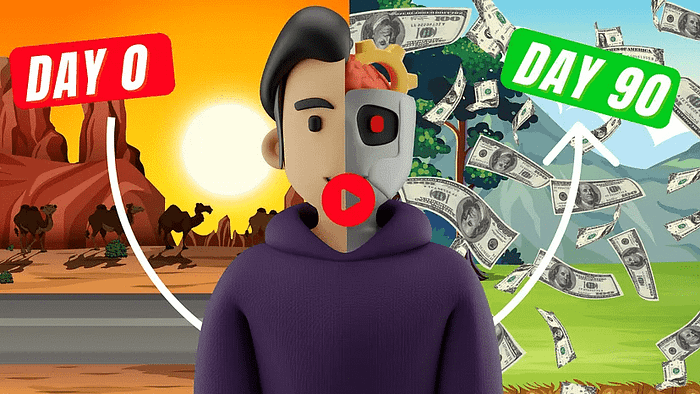8 Dark Psychology Sales Techniques: Mastering the Art of Persuasion
Understanding powerful sales techniques can transform your ability to influence and persuade potential customers. The psychology behind selling goes far beyond simple features and benefits – it delves deep into the human psyche, tapping into emotions, desires, and pain points that drive decision-making.
When it comes to mastering effective sales techniques, one must first grasp the fundamental principle that pain is the primary motivator for any purchase decision. Successful selling isn’t about pushing products – it’s about understanding and addressing the deep-seated emotional triggers that compel people to take action.
Picture yourself on one side of a vast canyon. Your prospect stands on the edge of a cliff, surrounded by their current problems, frustrations, and unfulfilled desires. On the opposite side lies their ideal future – a landscape of achieved dreams and solved problems. The gap between these two realities represents the challenges and obstacles preventing them from reaching their goals.
We strongly recommend that you check out our guide on how to take advantage of AI in today’s passive income economy.
Table of Contents
The Psychology of Pain and Pleasure in Sales
Modern sales techniques rely heavily on the interplay between pain and pleasure. Consider how luxury brands don’t just sell products – they sell transformative experiences. A high-end watch isn’t merely a timepiece; it’s a symbol of success, achievement, and social status. This psychological approach to sales taps into both the pain of current status and the pleasure of anticipated transformation.
Understanding your prospect’s current situation requires deep empathy and careful observation. Are they struggling with efficiency? Dealing with outdated systems? Feeling overlooked in their industry? These pain points become the foundation for building a compelling case for your solution.
The Three Levels of Pain Recognition
The journey from latent pain to extreme pain follows a carefully orchestrated progression. Think of it as peeling back layers of an onion, each layer revealing deeper emotional triggers and motivations that drive purchasing decisions.
Level 1: Latent Pain – This represents the unconscious discomfort people carry but haven’t fully acknowledged. It’s like having a slight backache that you’ve learned to live with, not realizing how much it affects your daily life.
Level 2: Realized Pain – At this stage, prospects become aware of their problems but might not feel sufficient urgency to act. It’s similar to recognizing that your backache is actually impacting your quality of life, but you’re still hesitating to seek treatment.
Transforming Challenges into Opportunities
Effective sales techniques involve positioning yourself as the bridge across that metaphorical canyon. Your role isn’t to sell – it’s to guide, support, and facilitate transformation. This approach requires a deep understanding of both your prospect’s current reality and their desired future state.
Consider the example of business transformation services. When presenting solutions, focus on painting a vivid picture of the prospect’s future success. Show them how their business could operate more efficiently, generate higher revenues, and achieve greater market penetration.
The Art of Solution Positioning
Modern sales techniques emphasize the importance of natural progression in the sales conversation. Rather than forcing a pitch, guide prospects through a journey of self-discovery. Help them realize not just what they want to achieve, but why it matters so deeply to them.
Closing Without Negotiation
One of the most powerful sales techniques involves presenting your price with unwavering confidence. This approach relies on the psychological principle of perceived value and authority. When you state your price clearly and confidently, you communicate that your solution’s value is non-negotiable.
The power of silence in sales cannot be overstated. After stating your price, resist the urge to justify or explain. Let the prospect process the information and come to their own conclusions. This psychological technique often leads to self-justification rather than price negotiation.
The Impact of Social Proof
Incorporating success stories and testimonials into your sales techniques creates a powerful psychological anchor. When prospects hear how others in similar situations achieved success through your solution, they naturally project themselves into those success stories.
The Power of Storytelling in Sales
Effective sales techniques often revolve around storytelling. Stories create emotional connections, make complex concepts relatable, and help prospects envision their own transformation. Share relevant experiences that mirror your prospect’s situation and desired outcome.
Using Psychology to Handle Objections
When facing objections, modern sales techniques emphasize using the prospect’s own words to maintain momentum. This approach requires careful listening and strategic questioning to help prospects work through their own concerns.
Building Long-term Value
The most ethical and effective sales techniques focus on creating genuine value. When your solution truly transforms your prospect’s situation for the better, the sales process becomes a natural progression toward mutual benefit.
Remember that successful sales techniques aren’t about manipulation – they’re about understanding human psychology and using that knowledge to help people make decisions that benefit their lives or businesses. By focusing on genuine value creation and transformation, you build not just sales but long-lasting relationships and positive outcomes.
The key to mastering these psychological sales techniques lies in practice, authenticity, and a genuine desire to help others achieve their goals. When you combine these elements with a deep understanding of human psychology, you create a powerful framework for successful selling that benefits both you and your prospects.

We strongly recommend that you check out our guide on how to take advantage of AI in today’s passive income economy.




